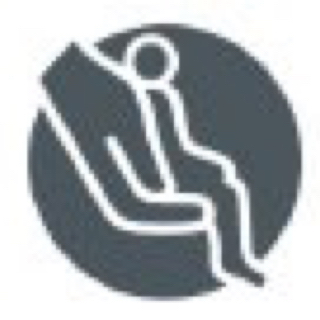Title Page
-
Document No.
-
Audit Title
-
Client / Site
-
Conducted on
-
Prepared by
-
Location
-
Personnel
AC WUX General questions
-
1. Is there a procedure for the use of personal protective aids?是否有劳动保护用品使用规范流程
-
2. How does the change management procedure work?如何进行变更管理
-
2.1 How are internal changes managed?如何实施内部变更流程管理
-
2.2 How are external changes managed?如何实施内部变更流程管理
-
3. Are the correct process validation present (e.g. welding procedures, cleaning validation,...)?现场是否有正确操作流程规范
1. Man
-
1.1 What does the operator need to do?操作员需要做什么?
-
1.2 How does the operator know what to do?操作员如何了解需要执行的内容
-
1.3 How does the operator determine if something is good? Execution of the different process steps?操作员如何判断产品/设备是OK的?执行不同的程序流程?
-
1.4 Does the operator know what to do when something is not good?操作员是否可判断产品/设备发生了异常?
-
1.5 Did the operator get training (this year)?操作员是否进行过培训(当年度)?
-
1.6 Does the operator know who should be contacted when there are questions regarding the procedures?当流程存在疑问时,操作员是否了解和谁进行联络?
-
1.7 Does the operator use the prescribed personal protective equipment?操作员是否使用合规的劳保用品?
-
1.8 Is the operator working according to the instruction?操作员是否按照工艺指导进行工作?
-
1.9 Does the operator comply with the legal requirements for his job (for example welding certification,...)?操作员是否遵守与工作内容相对应法律法规规定?(比如 焊工资质...)
-
1.10 Does the operator know how to handle dangerous products?操作员是否了解如何处置危险产品?
2. Machine
-
2.1 Are there backup machines/installations available (contingency plan)?备用设备/设施是否存在?(应急预案)
-
2.2 Is there a list of certified (AIB/Vincotte/...) tools (auxiliary tools for example lifting tools)?是否有专业校验机构校验过的工具清单(辅助工具例如升降工具)?
-
2.3 Is the correct tooling specified?(工具说明是否正确?)
-
2.4 Is there a maintenance plan for the tooling?是否有工具的维护保养计划?
-
2.5 Is tooling clearly identified?工具是否明确标定?
-
2.6 Is there a fixed location for storage of tools?工具是否有固定的存放区域?
-
2.7 Is backup tooling available?是否有备用工具
3. Method
-
3.1 Is there a clear instruction available?是否有清晰的工作指导书?
-
3.2 Is the instruction up to date? Edition management? Linked to drawings?工作指导书是否是最新版?版本号管理?是否和图纸相关联?
-
3.4 Are the specifications on the instruction clearly present?工作指导书上是否明确定义技术要求?
-
3.5 Are all parts clearly prescribed on the instruction?是否所有产品明确定义有工作指导书?
-
3.6 Are all parts located on their prescribed location?是否所有产品保存在规定的区域?
-
3.7 Are all necessary tools described?所有必要的工具是否都明确定义?
-
3.8 Is there a problem solving tool (PDCA/Kaizen/DMAIC/...) available?是否有问题解决工具?(PDCA/改善/DMAIC/...)
-
3.9 Are there Poka Yoke or similar systems in place?现场是否有防呆或者类似的系统?
-
3.10 Is the drawing of the supplier linked to the drawing of Atlas Copco?供应商图纸和AC图纸是否关联?
4. Environment
-
4.1 Are safety prescriptions known and respected by everyone?是否所有员工都知悉且遵守安全规范?
-
4.2 Is 5S applied in the work area?工作区域是否执行5S?
-
4.3 Is waste water & oil being collected and removed in appropriate recipients?是否对废水。废油进行收集,转移并进行合规处理?
-
4.4 Are the correct cables being used for electrical connections (e.g. test installations)?电气接头是否使用合规的线缆(例如 测试设备)
-
4.5 Is there any nuisance (smell, fumes, noise, insufficient light,…)?是否有让人不适的(气味,气味,烟雾,噪音,光线不足)
-
4.6 Are hazardous chemicals identified (incl. MSDS) & stored in an appropriate way?有害化学品是否明确标识(包括MSDS)并妥当保存?
-
4.7 Do you have a valid operating license (cfr. local legislation)?是否有有效的环评证书(地方法规)
5. Measure
-
5.1 Is there a calibration plan for measuring devices available?使用有量具的校验计划?
-
5.2 Is measuring equipment defined/available/used?检测设备是否被定义/可用/使用?
-
5.3 Does the equipment fit the measuring requirement?量具是否满足检测要求?
-
5.4 Is data registered?检测数据是否记录?
-
5.5 Is data used to optimize the processes?检测数据是否用于优化流程?
-
5.6 Is measurement equipment identified?检测工具是否被验证?
6. Material
-
6.1 Is every part identified (on part/packaging)?是否所有零件被验证(零件/包装)
-
6.2 Is there an organized location for each parts?每个产品是否有规划流程/场所
-
6.3 Is nok material identified (problem description) and separated from the flow?不良品是否被标定(问题描述),从流程中隔离
-
6.4 Are nok parts collected, handled and evaluated on a regular base?不合格品是否被收集,处理,基于通用标准进行评估?
-
6.5 Is there FIFO in place and is it respected?现场是否实现先进先出(FIFO)并严格遵守?
-
6.6 Is there an inventory management system in place?是否有库存品管理系统?
-
6.7 Are the parts being well stacked, packed and protected?零部件的摆放,堆叠和防护是否妥当
-
6.8 Are parts with different editions clearly visual distinguishable?不同版本的零部件是否明确区分?
-
6.9 Is the scan label according to the scan label specification (9820 4135 00)?扫描标签是否遵从标签规范(9820 4135 00)?
-
6.10 Is there a system in place to link each scan label for each item?是否有系统将标签和实物一一对应?
-
6.11 Is there a (sub)supplier management system in place?二级供应商的管理流程是否具备?
-
6.12 Is the supplier's traceability system sufficient to guarantee containment action?供应商的追溯系统是否保证能实施有效围堵?
-
6.13 When applicable can the supplier provide certificates?当有需求时供应商可否提供证明文件?
-
6.14 Check legal content certification/ documentation (for example PED/IEC/ROHS/ERP/...).检查法律内容认证/文档(例如 PED/IEC/ROHS/ERP/)
Conclusion
-
Safety安全:
-
Major最大项:
-
Minor最小项:
-
Point of attention关注点:










